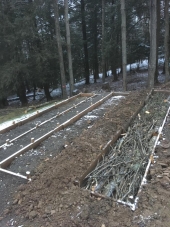
 5
5




Wisdom is the principal thing; therefore get wisdom: and with all thy getting get understanding. -Proverbs 4:7

 8
8




- Tim's Homestead Journal - Purchase a copy of Building a Better World in Your Backyard - Purchase 6 Decks of Permaculture Cards -
- Purchase 12x Decks of Permaculture Cards - Purchase a copy of the SKIP Book - Purchase 12x copies of Building a Better World in your Backyard
 4
4











 4
4




Anne wrote: It seems to me that the easiest way to solve the problem would be to bury it in lots of leaves and wood chips. I mean deep. Maybe putting a layer of cardboard down first. Then plant something. Maybe grow mushrooms.
While this article goes into toxic stuff I reference it to give you an idea of what plants can do.
http://www.resilience.org/stories/2014-08-11/using-plants-to-clean-contaminated-soil/
Invasive plants are Earth's way of insisting we notice her medicines. Stephen Herrod Buhner
Everyone learns what works by learning what doesn't work. Stephen Herrod Buhner
 4
4




Pecan Media: food forestry and forest garden ebooks
Now available: The Native Persimmon (centennial edition)
 3
3








Iterations are fine, we don't have to be perfect
My 2nd Location:Florida HardinessZone:10 AHS:10 GDD:8500 Rainfall:2in/mth winter, 8in/mth summer, Soil:Sand pH8 Flat

|
Destiny's powerful hand has made the bed of my future. And this tiny ad:
Back the BEL - Invest in the Permaculture Bootcamp
https://permies.com/w/bel-fundraiser
|


